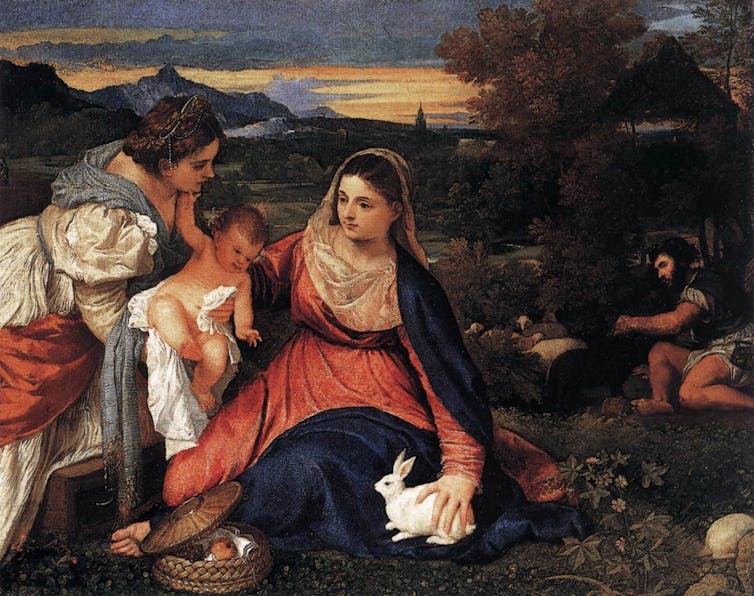
Every year on Easter, a long-eared, cotton-tailed creature is said to hop from house to house delivering festive baskets full of sweets, toys, and delicious candy to children, as well as hiding colorful eggs for them to find! The Easter Bunny, along with other popular Easter traditions like hot cross buns and exciting egg hunts, has long been a well-known and popular symbol associated with the religious holiday — but have you ever wondered where the Easter Bunny came from and how the cute, fluffy woodland creature became such a prevalent symbol of Easter?
The Easter Bunny is a much-celebrated character in American Easter celebrations. On Easter Sunday, children search for special presents left by the Easter Bunny, which are usually chocolate Easter eggs.
The tradition of an egg-bearing rabbit on Easter Sunday has a long history (and it’s not just because he’s cute!). The Easter Bunny has a long and rich history with the Christian celebration, dating back to ancient customsHere’s everything you need to know about the Easter Bunny’s fascinating origins so you can tell your friends and family about it before you celebrate with chocolate rabbits and plenty of bunny-shaped treats, including where it came from, how a rabbit became associated with Easter eggs, and how it became such a beloved symbol of the holiday overtime.
Where did the Easter Bunny come from?
As most Christians are aware, the Bible contains no mention of a mythological hare delivering eggs to children on the day of Jesus Christ’s resurrection, so it’s unclear why a rabbit became such an important component of one of Christianity’s most important rebirth and renewal rituals. According to Time, the rabbit’s symbolism comes from the ancient pagan festival of Eostre, which honored the goddess of fertility and spring, and on which many of our Easter traditions are based. The goddess’s animal symbol was a rabbit, which has long been associated with fertility due to its rapid rate of reproduction.
Religious Role of the hare/Easter bunny:
Easter is a time to rejoice in the arrival of spring and new life. Eggs and flowers are obvious symbols of feminine fertility, but the bunny, with its incredible reproductive capability, isn’t far behind in European traditions.
The Easter Bunny is known as the Easter Hare in European traditions. The hare’s symbolism has played a variety of fascinating ritual and religious roles throughout history.
During the Neolithic period in Europe, hares were buried with people in ritual burials. This has been regarded by archaeologists as a religious ritual, with hares representing rebirth.
Over a thousand years later, during the Iron Age, ritual burials for hares were common, and in 51 B.C., Julius Caesar reports that in Britain, hares were not eaten, due to their religious significance.
Caesar would have understood that hares were sacred to Aphrodite, the goddess of love, in Classical Greek mythology. Meanwhile, Eros, Aphrodite’s son, was frequently represented as a hare-carrier, a symbol of unquenchable desire.

Hares have long been used as symbols of sexuality in literature and art, dating back to the Greek world and the Renaissance. The Virgin Mary, for example, is sometimes shown with a white hare or rabbit, indicating her victory over sexual temptation.
What is the purpose of the Easter Bunny bringing eggs?
Since rabbits are mammals (and give birth to live young), the Easter Bunny may lay eggs on the holiday is an instance of misunderstood biology. Perhaps a new miracle will be added to the festivities? Combining iconography could be the answer. Eggs, like the rabbit, have long been seen as an ancient emblem of fertility, rebirth, and new life, all of which are associated with Easter’s springtime celebration!
Easter eggs, from a Christian perspective, signify Jesus’ resurrection and emergence from the tomb.
Read More:
4 Best and Easy Easter Recipes